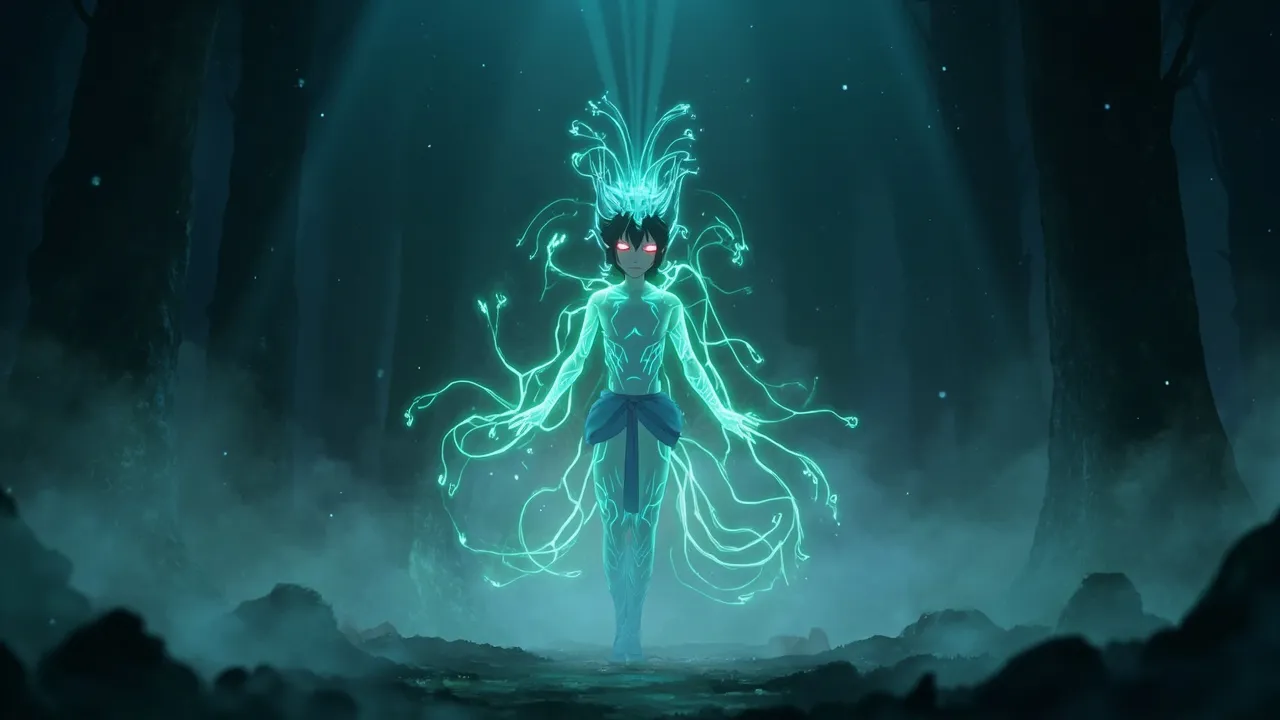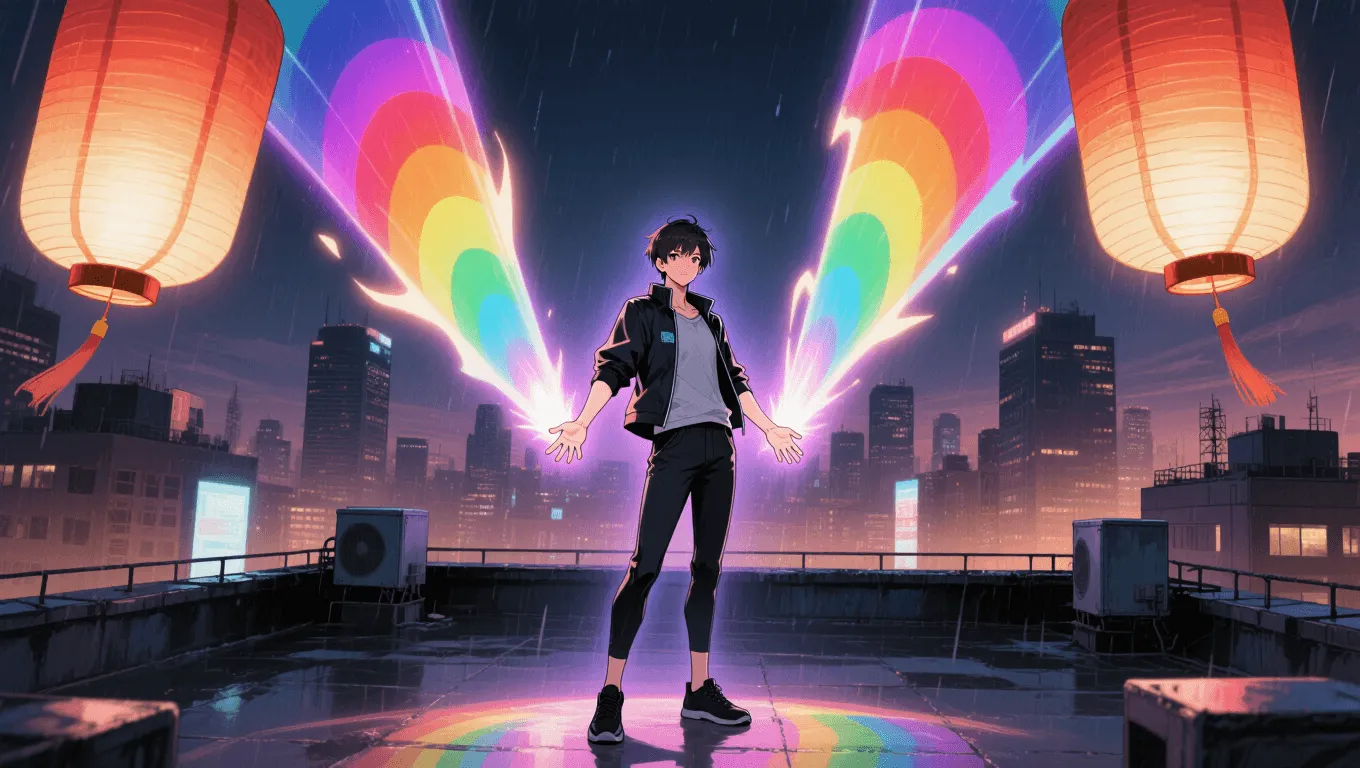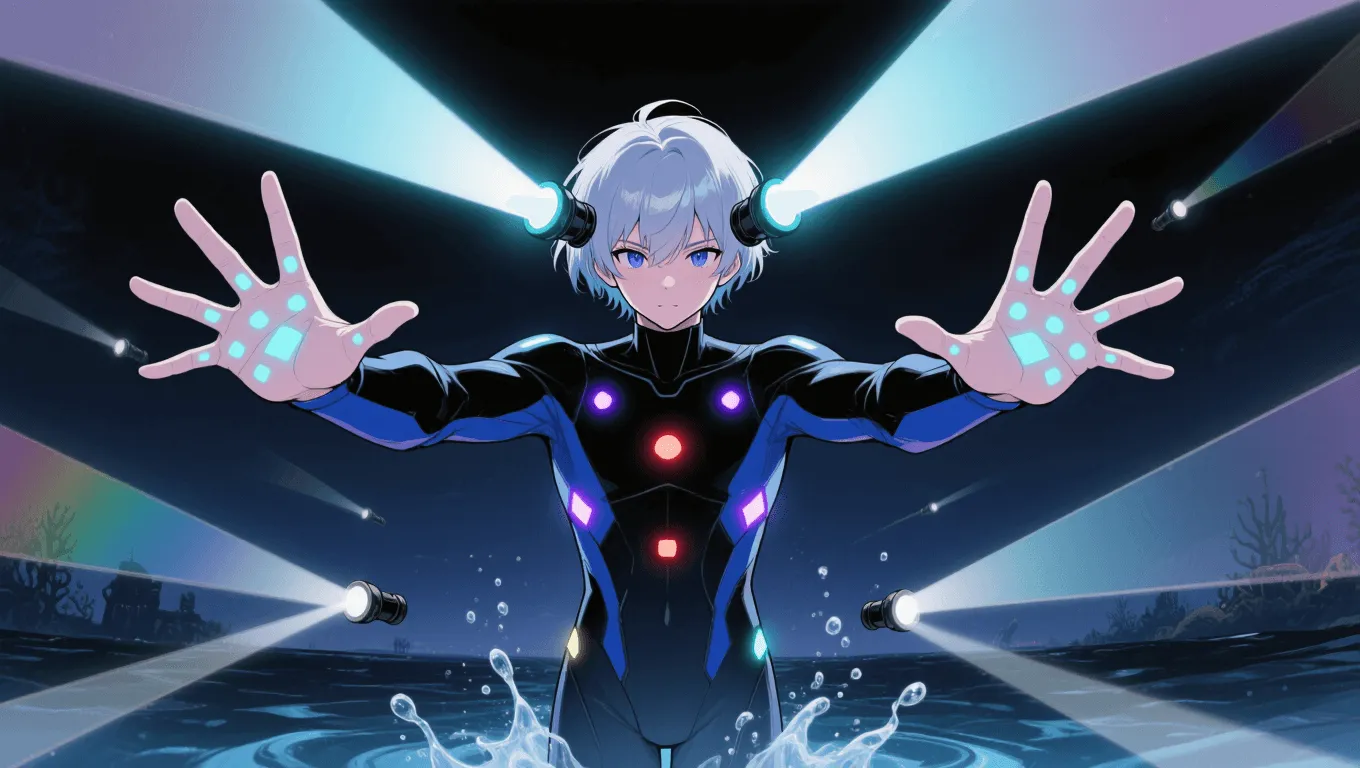Bio-Luminescence

Bio-Luminescence Video Demo 🎬
Table of Contents
Bio-luminescence is the superpower of creating visible light from the body—think living glowsticks powered by biology rather than batteries. By triggering natural chemical reactions similar to those found in fireflies and deep-sea creatures, users can emit soft glows, focused beams, or strobing patterns on command. In roleplaying and comics, bio-luminescence becomes a versatile toolkit for stealth, signaling, distraction, and nonlethal control. For related abilities and build ideas, browse the growing superpower wiki or spin up inspiration with our random superpower generator.
What Is Bio-luminescence
Bio-luminescence is a biologically driven form of light emission. Instead of projecting pure energy like lasers, the user’s tissues—often specialized cells called photophores—produce light through safe, low-heat reactions. The brightness can range from a gentle night-light glow to a camera-flash burst. Some users control not only intensity but also color (wavelength), timing, and direction. While this power is primarily visual, advanced users can push into near-infrared or near-ultraviolet for covert signaling and sensor tricks.
In practice, bio-luminescence supports exploration and survival: reading in the dark, marking trails, calming allies, or dazzling opponents at close range. It excels in environments where electronics fail—flooded tunnels, blackout zones, or the open ocean—and empowers characters to act as their own beacon, flare, and flashlight.
Core Abilities of Bio-luminescence
Light Emission (Baseline)
The foundation is controlled glow. Users can radiate light from the skin or concentrate it in the palms, fingertips, or eyes. Output can be continuous for illumination or pulsed for bursts.
Spectral and Color Control
With practice, some can tune color temperature and hue: blue-green for underwater clarity, red for preserving night vision, or white for maximum visibility. Limited near-IR/near-UV output supports stealthy comms with compatible optics.
Patterned Signaling
Flashes and sequences turn the body into a silent communicator. Morse-like pulses, coded blinks, or heartbeat-synced patterns deliver messages when radios are jammed.
Counter-Illumination Camouflage
By matching ambient light from above, the user reduces their silhouette—especially effective at night or underwater. This “luminescent camouflage” isn’t true invisibility but can meaningfully lower detection.
Dazzling Flash
A short, high-intensity burst overwhelms dark-adapted eyes and many night-vision devices, creating afterimages and disorientation. It’s a nonlethal crowd-control tool and an escape tactic.
Persistent Light Traces
Users can leave faint glowing marks on surfaces, gear, or water trails—perfect for pathfinding, tracking, or misdirection through decoy breadcrumbs.
Photophore Morphology
Some can “shutter” or reshape their light organs, focusing beams like a built-in lantern, creating softboxes for medics, or forming crisp symbols (arrows, letters) for team coordination.
Application / Tactical Advantages in Combat
Stealthy Movement and Recon
Counter-illumination reduces contrast, helping users slip past sentries. A subtle, directionally controlled glow illuminates footing without broadcasting position.
Area Denial and Distraction
In smoke, mist, or spray, light scatters dramatically. Quick strobes and sweeping beams create confusing halos and hotspots, drawing enemy attention away from allies.
Nonlethal Control
Dazzling flashes disrupt coordination and aim without causing permanent harm. Used in rhythm with obstacles or sonic effects, they can break formations.
Communication Under Interference
When electromagnetic jamming or silence is required, coded blinks synchronize squads and drones. Narrow beams and specific wavelengths keep messages discreet.
Search, Rescue, and Navigation
As a living beacon, the user guides teams in blackout zones, signals evac points, and illuminates hazards while preserving everyone’s night vision with color-tuned light.
Psychological Edge
Pulsing ribbands, luminous eyespots, or halo auras unsettle opponents and rally allies—turning presence into a morale multiplier.
Level: Level 1 🏙️, Level 2 🌇, Level 3 🌃
Level 1 🏙️ – Spark

-
Flashlight-level glow for minutes at a time.
-
Two to three color options; simple on/off pulses.
-
Basic counter-illumination when stationary.
-
Dazzling flash works within a few meters on unprepared targets.
-
Light organs are mostly fixed; crude focusing by hand or posture.
Level 2 🌇 – Radiant

-
Sustained lantern brightness with adjustable beams.
-
Broad color control in the visible spectrum; hints of near-IR/UV signaling.
-
Reliable counter-illumination while walking or swimming slowly.
-
Flash can disrupt trained foes and cause sensor bloom in night-vision gear.
-
Can leave persistent glow marks and render simple icons or arrows.
-
Emission can sync to breathing for calm, stealthy rhythm control.
Level 3 🌃 – Abyssal Crown

-
Brief searchlight bursts; precise long-distance signaling in clear air or water.
-
Fine spectral tuning with “covert bands” for friendly optics; anti-sensor strobe patterns.
-
Dynamic counter-illumination while sprinting or diving; silhouette suppression from multiple angles.
-
Complex strobes entrain attention, induce afterimages, and fracture group coordination.
-
Reconfigurable photophores with shutter-like apertures along arms, shoulders, and spine.
-
Subtle photonic mirage: shimmering distortions that confuse depth cues (non-damaging, but excellent for misdirection).
Limitations of Using the Bio-luminescence
-
Metabolic Cost: Light takes fuel. Long periods at high brightness drain calories and fluids, risking fatigue, cramps, or dizziness.
-
Operational Signature: Any light can reveal position. Poorly tuned counter-illumination or accidental glow gives enemies a target.
-
Medium Sensitivity: Fog, smoke, and murky water can backscatter light, blinding the user as much as the foe if intensity and angle aren’t managed.
-
No Hard-Light by Default: Bio-luminescence is illumination, not a solid construct or cutting laser. It can dazzle, not slice.
-
Biochemical Dependence: If the body requires specific precursors (luciferin-like compounds), malnutrition, toxins, or illness can dim output or skew color.
-
Counter-Optics: Anti-glare visors, adaptive exposure cameras, and high dynamic range sensors reduce the effectiveness of flashes and strobes.
-
Self-Effects: Prolonged strobing may cause headaches, nausea, or disrupted sleep cycles without training and careful pacing.
Weakness Against What Other Superpowers
-
Darkness Manipulation: Absorbs or nullifies emitted light, shutting down visibility and neutralizing glare.
-
Shadow Stealth/Shadow Phasing: Enemies anchored to shadows bypass illumination-based detection and ignore dazzle.
-
Photokinesis (External): Opponents who control ambient light can bend, scatter, or snuff the user’s glow, breaking signals and camouflage.
-
Energy Drain/Stamina Siphon: Cuts the metabolic fuel needed for emission, rapidly dimming brightness.
-
Illusion/Perception Warping: Distorts what observers “see,” reducing the tactical value of strobe cues and false trails.
-
Thermokinesis/Heat Haze: Warps air density and ruins beam focus, degrading counter-illumination matching.
-
Non-Visual Senses: Echolocation, vibration sense, or telepathy sidestep visual disruption entirely.
Synergistic Power Combos
-
Hydrokinesis + Bio-luminescence: Mist and spray become light canvases for volumetric barriers, guiding ribbons in rescues, or glittering decoys in pursuit.
-
Sound Manipulation + Bio-luminescence: Coupled beats and blinks create multi-sensory disorientation or perfectly timed team choreography.
-
Partial Invisibility + Counter-Illumination: Faint glow fills the “edges” that betray cheaper invisibility, producing near-seamless blending.
-
Bioelectricity/Electroreception: Sync emission to nerve rhythms for lie-detection cues, stress feedback, or heartbeat messaging under silence.
-
Aerokinesis/Smoke Crafting: Shape light-scattering plumes into temporary veils, corridors, or luminous arrows to direct crowds and allies.
-
Holography/Light Hardening (Ally): A teammate who can shape or solidify light refines the user’s glow into signage, simple barriers, or floating symbols.
Known Users
Writers often portray characters with light-based tactics even if their origin isn’t strictly biological. A classic adjacent example is Dazzler, who converts sound into light to blind, distract, and communicate—showcasing many battlefield uses similar to bio-luminescent strategies. Oceanic heroes, subterranean scouts, and biotech operatives in RPG campaigns frequently adopt bio-luminescence for navigation, signaling, and morale—turning darkness itself into a tactical asset.
For more powers to pair with bio-luminescence, explore the rest of our superpower wiki or spark a fresh build with the random superpower generator.
